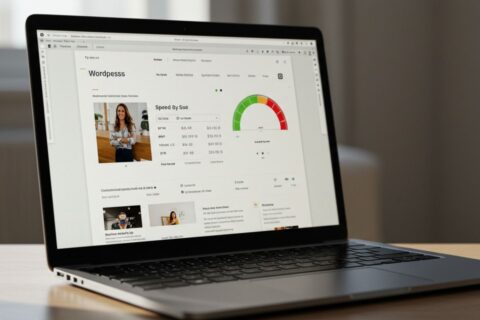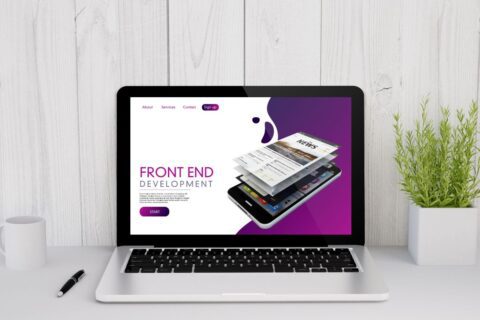When was the last time you left a website simply because the text was too small, too cluttered, or too hard to read? You’re not alone. Studies show that 38% of users stop engaging with a website if the layout or content isn’t visually appealing or easy to read (Adobe, 2024). That’s where font readability comes in. The right font can keep readers hooked, while the wrong one can push them straight to the exit button.
In this blog, we’ll explore why readability matters, the key factors influencing it, and the top tools to test website font readability so you can make sure every visitor has a seamless reading experience.
Why Website Font Readability Matters
1. User Experience (UX)
Readable fonts make content effortless to digest. According to UX research, users form a first impression of a website within 50 milliseconds, and poor typography is one of the quickest deal-breakers. Clean, well-sized fonts reduce eye strain, improve comprehension, and encourage visitors to stay longer.
2. SEO Benefits
Google doesn’t directly rank fonts—but user behavior does matter. A site with unreadable fonts increases bounce rates, which signals poor quality to search engines. In fact, readable typography can improve on-page engagement by up to 30%, indirectly helping your SEO performance.
3. Accessibility Compliance
Accessibility is no longer optional—it’s essential. WCAG guidelines recommend minimum contrast ratios and font legibility standards to ensure inclusivity. Using a website font accessibility checker helps you comply with these standards and avoid legal or ethical pitfalls.
4. Conversion Optimization
Readability isn’t just about looking pretty—it’s about guiding users. Easy-to-read fonts help highlight CTAs, product descriptions, and forms. One study revealed that improving text clarity increased conversions by 15% for e-commerce sites.
Also Read: Best fonts for your website
Key Factors Affecting Font Readability
- Font Type & Size: Sans-serif fonts like Arial, Helvetica, and Roboto are generally more readable on screens. Industry best practice sets 16px as the minimum body text size.
- Line Spacing & Letter Spacing: Adequate spacing prevents text from looking cramped, improving scanning speed by up to 20%.
- Contrast Ratio: Text must stand out from the background. WCAG recommends a minimum 4.5:1 contrast ratio for body text.
- Device Responsiveness: With mobile accounting for 58% of global web traffic, ensuring readability across all devices is non-negotiable.
Top Tools to Test Website Font Readability
Now, let’s dive into the best tools for font readability that can help you refine your typography and enhance your site.
1. Google Fonts + Readability Checker
A free and widely-used solution with an extensive font library. It lets you preview fonts across devices and includes a website font readability checker to ensure clarity in real-world usage.
2. WebAIM Contrast Checker
One of the most popular font readability online tools, this checks your color contrast against WCAG standards. It’s a must-have for accessibility-focused designers and developers.
3. Readable.com
Not just a website font readability checker, but also a content clarity evaluator. It uses scoring systems like Flesch-Kincaid and Gunning Fog to test website readability and ensure your text is both legible and engaging.
4. Fontjoy
This AI-driven tool helps you discover font pairings that balance style and legibility. A great choice when you want to optimize branding while ensuring readability.
5. Type Scale by Google
Perfect for testing hierarchy and proportional scaling. Designers use it to check heading-to-body ratios and create visually pleasing typography systems.
6. Lighthouse (Google Chrome DevTools)
A powerhouse tool that not only tests site performance but also acts as a website font accessibility checker by flagging small fonts, low contrast, or poor scaling issues.
Best Practices for Testing Font Readability
- Test across devices & browsers: What looks great on desktop might fail on mobile.
- Balance aesthetics with clarity: Avoid overly decorative fonts for body text.
- Use real content: Always test fonts with live text, not filler “Lorem Ipsum.”
- Combine tools:No single tool gives the full picture—pair multiple font readability online tools for a complete analysis.
Conclusion
Font readability is not just a design detail—it’s a business driver. By leveraging the top tools to test website font readability, you can reduce bounce rates, improve engagement, and even boost conversions. Clear typography is a subtle yet powerful way to build trust and credibility with your audience.
So, before publishing your next page or campaign, test website readability, refine your typography, and give your visitors the seamless experience they deserve.
FAQs
Q1: What is the best free tool to test website font readability?
Google Fonts and WebAIM Contrast Checker are among the best tools for font readability, offering free and easy-to-use solutions.
Q2: How do I know if my website font is readable?
Use tools like Readable.com or Lighthouse to evaluate font size, spacing, and contrast. Pair this with a website font readability checker for accurate insights.
Q3: Does font readability affect SEO?
Yes, indirectly. Readable typography improves engagement metrics like time on site and bounce rate, which positively influence search rankings.
Q4: What font size is considered optimal for websites?
A baseline of 16px for body text is recommended, with larger sizes for headings and responsive scaling for mobile devices.







